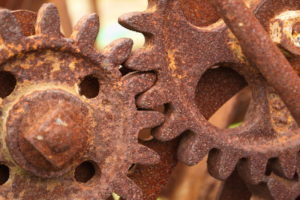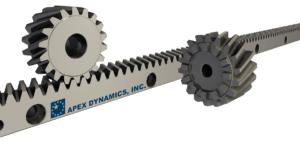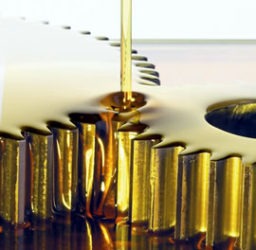Corrosion-resistance racks

Because we frequently have questions about the possibilities for corrosion protection, we listed the options in this article.
Nickel plated rack (order code N)
Nickel plating is the process in which a metal (usually steel) is provided with a layer of nickel. This is a protective layer that protects the metal from rust and other corrosion. There are two methods:
- Chemical (also electroless or autocatalytic) nickel plating. In this process the object is immersed so that an autocatalytic chemical reactions is taking place in the bath.
- Galvanic or electrolytic nickel plating. In this process, the article is hung in a bath and nickel plated by electrolysis, acting as a cathode.
Depending on the application, we can first nickel plate and then grind or the other way around, first grind and then nickel plate.

Phosphated rack (order code P)
Phosphate is a chemical process that applies a low insoluble phosphate to a metal surface. Because the top layer of the base material contains no metal, it reacts differently from the original metal surface. Such a layer is also called a conversion layer. The phosphate layer has good adhesion and corrosion protection properties. Due to the action of a weakly acidic phosphate-containing liquid on the steel surface, the following reaction occurs:
2 Fe(s) + Fe3+(aq) + 3 H2PO4-(aq) -> 3 FePO4(s) + 3 H2(g)
The colour of the phosphate layer is grey to blue black, a good example of phosphated steel is for example, the well-known Colt 45 revolver.
Blackened rack (order code B)
The characteristic of chemical blackening is that there is a chemical conversion of the surface. As a result, there is almost no change in size of the product to be treated. By immersing in a hot (140-145ºC) alkaline bath it creates a chemical reaction in and on the surface. The alkaline bath consists of a mixture of salts (sodium hydroxide, sodium nitrate, nitrate, surfactants and stabilizers). This results is a uniform deep black appearance with limited corrosion resistance.
After blackening, the parts are usually extra conserved with an oil or a wax to ensure better corrosion resistance. Because the conversion layer is fairly thin, 4-5 microns, the corrosion resistance is limited. The colour of the treated metal is obviously deep black and matte.
Corrosion resistance and lubrication
Of course, lubricating the system causes some corrosion resistance of the teeth, however this lubrication does not run over the entire rack, leaving this part unprotected and thus will rust. In addition, the sides are not protected. To counteract this, the above mentioned corrosion protection has been introduced.
We do everything to run faster, so it is logical that we implement that in our products. Corrosion resistance keeps our products running even longer for you. Do you want to know more about the options or explanation about which treatment is best for your application? Please contact us.





